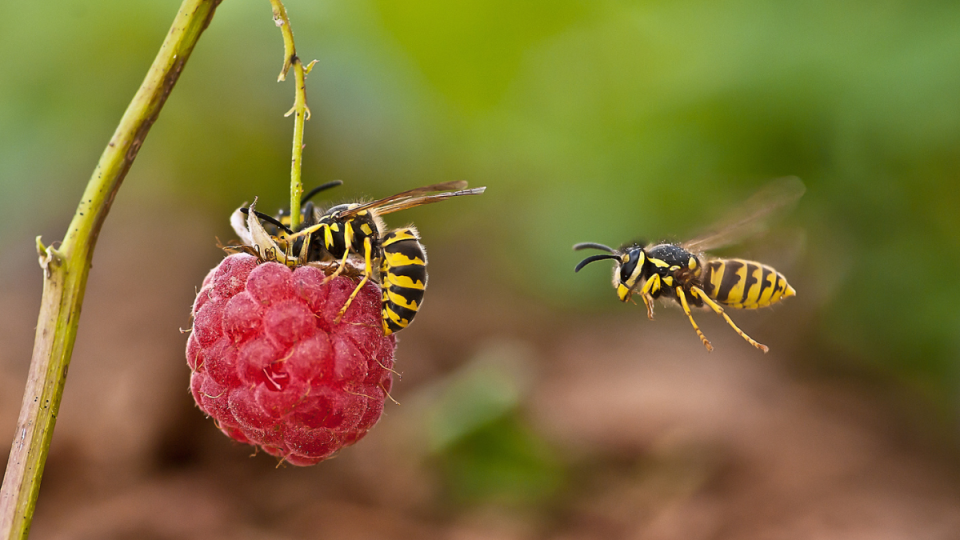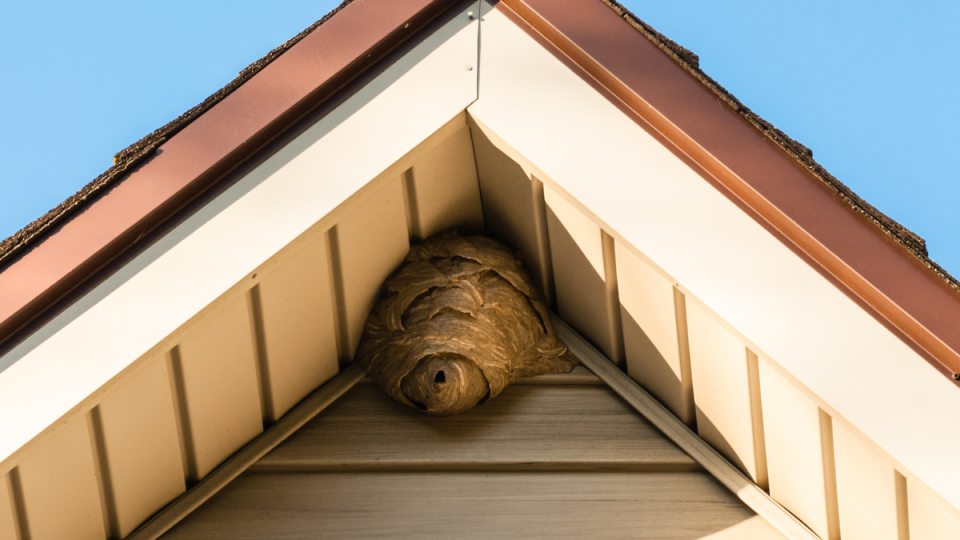How to Repel Wasps: Pest Pros Recommend the Plants + Household Products That Work Best
While it’s exciting that temperatures are beginning to climb and we’re inching toward warmer weather, the spring and summer seasons approaching also signals the natural increase of active insects. One species that will soon become prevalent is wasps. While they ferociously hunt other pests such as spiders, you certainly don’t want to encounter a wasp that might see you as a threat and sting you, especially if there is potential for a dangerous allergic reaction. You can often avoid conflict with wasps by staying vigilant and avoiding contact with them and their nests whenever you can, but there are also things you can do to deter them from your home to begin with — without the need for harmful chemical-laden sprays. Here, experts weigh in on how to repel wasps as naturally and effectively as possible.
What are the different types of wasps?
You might immediately think of a big black and yellow pest with a massive stinger when you think of wasps, but the yellow jacket is just one species to look out for. Not every wasp is the same. There are different wasp categories — the two most prominent being solitary and social wasps — which function in different ways.
Solitary wasps
Solitary wasps like mud-daubers and thread-wasted wasps have the ability to sting, but are generally not aggressive toward humans. In fact, they are not even prone to defending their nests. Of course, you should always exercise caution to avoid making any wasp defensive, but these kinds of wasps can mostly coexist with people.
Social wasps
Social wasps present greater risk. Paper wasps, for example, typically won’t approach humans, but will serve warnings if they feel their nest is being threatened and protect it if need be. Bald-faced hornets are also aggressive if they or their nest feel threatened, and they will often sting repeatedly. However, they are beneficial in that they prey on other insects like flies and even yellow jackets. The yellow jacket is notoriously aggressive both near and away from their nests, will not shy away from conflict with humans and tends to sting multiple times with a very powerful and painful sting.
“Every type of social wasp is capable not only of causing physical pain, but also posing life-threatening risk for those allergic to their stings,” says Bryan McGee, Structural Pest Control Manager Texas A&M. They can attack quickly and with great vigor, seemingly unprovoked. "Social wasps attack most often when they are disturbed, irritated or threatened in some way, and can sting multiple times, because unlike bees, they do not lose their stinger after they have stung.”
How to repel wasps without harmful pesticides
The more attractants are in your yard, the more likely it is that you’ll run into one or more wasps outside. This doesn’t mean, though, that you should start over-using pesticides that might deter the wasps, but potentially at a cost to the health of any pets, other beneficial insects, the environment and yourself. Try some of these more natural methods outside to limit wasp traffic.
Plant these plants to mask sweet scents

John Stewart, from the technical team at pest control and garden care brand parent company Pelsis, says the later summer months are when wasps become a nuisance not only to people, but to yards and gardens as they turn their attention to fruit plants and trees. This is when you'll want to start thinking about how to repel wasps so you can avoid the disturbance.
“To keep wasps at bay at the end of summer, use companion planting with mint and peppermint to disguise the sweet smell of your fruit plants from feeding wasps,” he suggests.
The pros at Zunex Pest Control also suggest planting lavender, basil, marigolds, rosemary, lemongrass, chrysanthemums and wormwood, all of which have aromas that are potent and undesirable to wasps.
Related: Home Remedies To Get Rid of Flies: Pest Control Pros Reveal The Best Choices
Remove these wasp attractants
Other substances that attract wasps include sugary drinks, fruits, nectar and protein-based foods such as meat, fish and even pet food, explains Shannon Harlow-Ellis, Certified Entomologist at pest control service Mosquito Joe.
“To deter wasps, clean up grills and remove any food scraps or meat drippings,” she says. “Securely wrap soda cans and ensure garbage bags are tightly sealed before disposal. Remove fallen fruit from fruit trees promptly.” Harlow-Ellis also advises positioning aromatic flowers away from common gathering areas.
Make your own soda-bottle trap
Experts also suggest using traps around the perimeter of your yard to discourage wasps from entering. Utilizing mosquito nets and mesh coverings in gathering areas outside to deter wasps can be helpful. You can grab an inexpensive store-bought natural trap or make your own at home. One common homemade trap includes mixing water with sugar or a sugary substance inside of a jar, bottle or can — just make sure the wasp has room at the top to get inside. They’ll be drawn to the mixture, and once they’re in, they’ll be stuck and unable to get out. Make sure to keep these traps away from common spaces.
Watch this video to see this trick in action:
Opt for these household staples to repel wasps
Vinegar
If you're wondering how to repel wasps with household ingredients, it's actually quite simple. You can mix white or apple cider vinegar with water and use a spray bottle to keep away wasps. This on its own won’t kill them, but they will be repelled by the acidity. Use the spray around your yard, on items wasps might land on and the potential entry areas to your home.
Dryer sheets
Another inexpensive trick that could work to deter wasps is dryer sheets. No matter the brand, wasps and bees tend to shy away from dryer sheets as long as they are scented. Experts recommend using the sheets in places where wasps might be inclined to make a nest like mailboxes, and places they might frequent including picnic, dining and barbecue areas.
Related: The Best DIY Ant Killers That Really Work, According to Pest Pros
Inspect these areas

When it comes to how to repel wasps, being proactive can't be overestimated. It becomes more challenging to remove or avoid wasps once a nest has been built and become active, so you should try and make your space less inhabitable for wasps. Experts suggest covering and closing any interior or exterior holes, openings, cavities, cracks or any area where wasps might be able to burrow.
McGee recommends cautiously inspecting all areas of your home toward the beginning of wasp season so you can catch nests before they get big, busy and potentially dangerous.
“These pests can show up in the most unlikely places, and some wasps can build paper nests under eaves, in doorways or beneath picnic tables, while others simply burrow holes in the ground to build their nests,” he says. “If there is a wasp nest located near a building, it needs to be taken down and destroyed.”
Getting close to and removing a nest always poses a potential risk, so it’s best to seek professional services if and when you spot a nest.
Staying safe around wasps
Of course, the last thing you want to do is come directly in contact with any species of wasp. Harlow-Ellis suggests wearing light-colored clothing and avoiding strong perfumes or scents that might attract wasps.
In the event that they do come near you, she says, try your best to stay as calm as possible, avoid sudden movements and swatting at them as this can provoke aggression and increase the risk of stings.
Click through for more ways to protect yourself and your home from pests:
Home Remedies To Get Rid of Flies: Pest Control Pros Reveal The Best Choices
The 5 Best Essential Oils to Naturally Repel Ticks
Why Are Mosquitoes Attracted to Me? 4 Reasons + Tips for Getting Those Skeeters to Pass You By

